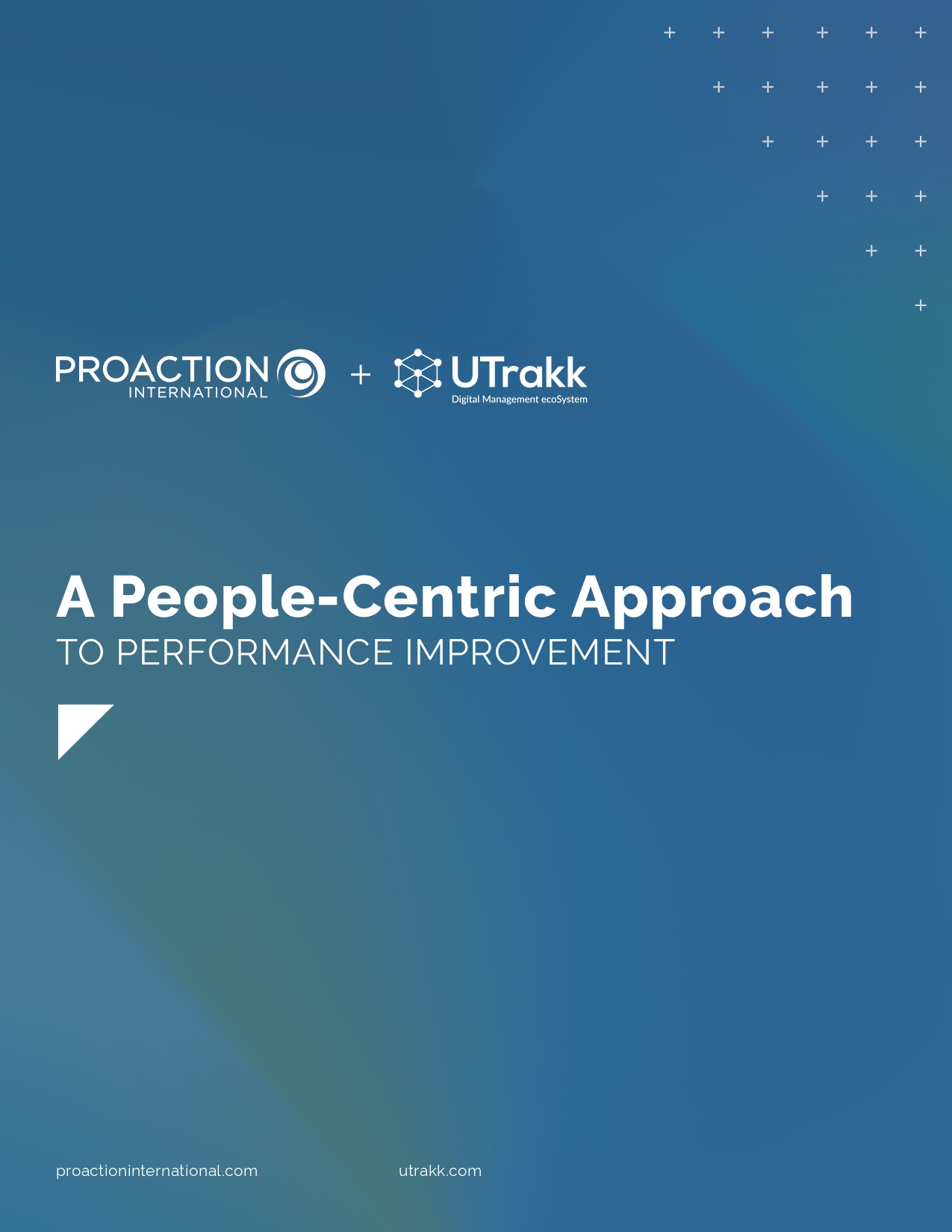What are Lean operations?
The origins of the Lean philosophy
Lean Management was developed in Japan after World War II. Faced with limited resources and a demanding market, Toyota created an innovative production method known as the Toyota Production System (TPS). Rather than imitating American mass production, the manufacturer focused on eliminating waste, optimizing production processes, and involving operators in problem-solving.
This approach brought universal concepts such as Just-in-Time, Jidoka (autonomation, or automatic shutdown in case of problem), and Kaizen (continuous improvement).
Beyond these tools, the Toyota Production System was based on a management philosophy – which would later be known as Lean thinking – that emphasized respect for people and the constant pursuit of perfection. With TPS, every individual is considered an essential contributor to continuous improvement and overall performance.
This people-centric vision shaped the Lean approach, which over time has evolved into an organizational culture applied far beyond the industrial world.
Definition of Lean operations
Lean operations refer to all processes, practices, and behaviors that aim to continuously improve an organization's performance by focusing on the value perceived by the customer.
Here, “value” refers to what the customer demands and is willing to pay for, and anything that does not contribute to creating this value is considered waste that should be reduced or eliminated. So Lean optimizes the entire value creation system, not isolated tasks. Every step in a production process must be useful, simple, efficient, and aligned with client needs.
These operations focus on Lean principles, connecting strategy, processes, and behaviors into a coherent system.

Benefits of Lean operations
Operational benefits
-
Reduction of waste: Lean methods eliminate non-value-added activities such as unnecessary transportation, repeated movements, waiting times, overproduction, and defects.
-
Improved quality: By promoting rapid problem detection, standardizing best practices, and fostering a zero-defect culture, Lean reduces cost associated with non-quality and enhances process reliability.
-
Increased productivity: By streamlining continuous flows, the Lean methodology enables higher output using the same resources, as well as lower costs.
-
Enhanced flexibility: With more agile and well-organized processes, a Lean system can adapt more easily to demand fluctuations.
Strategic benefits
-
Increased competitiveness: In saturated markets, offering superior quality at a competitive cost allows companies to improve profitability and differentiate themselves from competitors.
-
Greater responsiveness: With shorter production cycles and agile processes, companies can respond in a quick and efficient way to changing customer needs.
-
Sustained innovation: By freeing up time and resources, the Lean approach encourages new ideas and innovative solutions, supporting continuous improvement.
Human benefits
-
Greater autonomy: Employees are actively involved in problem-solving and solution implementation, which helps engage them in the continuous improvement of internal processes.
-
Better communication and collaboration: Routines and visual management facilitate open and regular exchanges between teams and across hierarchical levels, strengthening cohesion and alignment with objectives.
-
Development of frontline leadership: Lean methods encourage managers to be present on the floor and support their teams, transforming them into true leaders.
-
Increased job satisfaction: Employees who see their ideas acknowledged and observe the tangible impact of their daily actions are more engaged and satisfied at work.
Examples of Lean operations in various industries
Long associated with the automotive industry, Lean operations are now being applied across a wide range of industries, regardless of the company size, to create customer value, reduce complexity, and empower teams.
Manufacturing
The Lean methodology originated in manufacturing, and it still demonstrates its full power in this industry through Lean Manufacturing. Manufacturing companies use this method to reduce cycle times, stabilize production, and improve quality.
Example: A consumer goods manufacturer adopts a Kanban system to produce based on actual demand and reduce its inventory.
Supply chain and logistics
In supply chain and logistics, Lean principles help address unnecessary transportation, excessive inventory, and waiting times between tasks. The goal is to create a smooth flow and a Just-in-Time delivery system, reducing interruptions and overstock.
Example: A distribution warehouse sets a pull system for its preparation areas, which reduces movement and improves order accuracy.
Construction and engineering
Construction projects often struggle with delays, material waste, and a lack of coordination. The concept of Lean Construction provides a collaborative approach to better plan, communicate, and execute, integrating Lean principles into project and construction site management.
Example: A building contractor applies the 5S method to keep work areas clean and tidy, reducing accidents and wasted time.
Healthcare
In hospitals and clinics, Lean operations help reduce waiting times, standardize patient pathways, and support healthcare staff. This involves better organizing administrative and operational processes to free up time for providing crucial care.
Example: An emergency department implements daily coordination meetings to anticipate peak patient volumes and efficiently allocate resources.
Technology
In technology environments, Lean has a natural ally – the Agile methodology. Both share a common approach based on continuous improvement, short feedback loops, and a focus on customer value.
Example: A software development team creates a value stream map to identify the steps that extend the time between design and production.
Services
Service companies like banks and insurance companies generate a huge amount of "hidden" waste – redundant, manual data entry, multiple validations, processing errors, etc. Lean operations allow them to visualize and simplify these processes to reduce unnecessary tasks and steps, and increase efficiency.
Example: A call center implements visual boards of response times to better distribute the workload among agents.
Public sector
Government agencies and public services face dual pressures – limited resources and more expectant citizens. Lean helps them simplify administrative processes and reduce processing times.
Example: A city hall analyzes citizens' journeys through its administrative procedures for permit requests to eliminate unnecessary steps and simplify forms.
Key steps to implement Lean operations in your organization
Implementing Lean operations involves a profound, structured, and progressive transformation. The approach must combine thorough analysis, team involvement, and discipline throughout execution.
1. Analyze the current situation
Any sustainable Lean initiative begins with a diagnosis. Before taking action, a company must understand its current work processes, identify the causes of waste, and assess its operational maturity. This helps create a clear map of the value chain and its processes, which is essential for targeting improvement efforts.
2. Set priorities
Next comes the prioritization phase. Rather than transforming everything at once, organizations must select a few high-impact areas such as a production line, a warehouse, or a customer service. The objective is to drive quick and tangible results to boost motivation.
3. Train and engage leaders
No Lean project can succeed without the engagement of leaders. Managers at all levels must be present on the floor, embody Lean principles, and support their teams. Without this constant guidance, the initiative may not last.
Employee and leadership training is crucial. Everyone must understand the principles of Lean, their role in the initiative, and the objective of their actions. This educational work creates a common language and aligns mindset and behaviors.
4. Test with pilot projects
Next come the pilot projects which are deployed on a limited scope. These experiments help test Lean tools, validate practices, and demonstrate the tangible results generated by the Lean methodology.
5. Measure and adjust continuously
Data from the pilot projects is used to refine practices before they are implemented in other departments, with the rollout occurring gradually to consolidate lessons learned at each stage.
Lean implementation doesn’t really have an end. It’s a continuous improvement and learning cycle that requires organizations to measure, correct, standardize, and repeat – periodically.
6. Involve teams at every step
The success of Lean implementations highly depends on the human dimension. It’s about creating a work environment where teams feel involved, recognized, and valued. Support from leaders, recognition of efforts, and regular communication are essential to building a sustainable Lean culture.
How to measure and manage the performance of your Lean operations
Define Lean key performance indicators
Measuring Lean operations requires rigorous observation of the realities of the work environments through process improvement KPIs.
Among the most representative performance indicators:
-
Production lead time represents the complete processing time of a product or service, from request to delivery. It measures process fluidity and identifies bottlenecks.
-
Defect rate reflects the organization's ability to maintain a consistent level of quality. With Lean, each non-conformity becomes an opportunity for collective learning.
-
Equipment availability allows for monitoring the reliability of machines and the effectiveness of maintenance plans, which are key aspects for stabilizing a production system.
-
Hourly productivity measures teams’ ability to produce more value without increasing their workload, all through better organization and the elimination of unnecessary tasks.
-
Employee engagement rate is based on the perception of active participation and motivation of employees.
Regularly tracking these KPIs enables companies to visualize progress, understand gaps, and adjust actions on the floor.
Implement visual management
One of the strengths of the Lean system lies in its transparency. By making operational data accessible and understandable through graphic and physical representations (dashboards, Kanban cards, displays, markings, etc.), visual management allows teams to see the actual status of operations at a glance, immediately detect any deviation, and take immediate action.
With this shared visibility, teams can make decisions faster, solve problems at the source, and manage daily performance more effectively.
Use a Daily Management System (DMS)
Technology is opening up new possibilities for Lean project implementations. By facilitating action tracking, structuring communication channels, and centralizing operational data, Daily Management Systems (DMS) like UTrakk elevate Lean initiatives to the next level.
UTrakk helps leaders incorporate best practices in daily management and maintain operational discipline through a complete set of powerful features:
-
Digital floor tours: The solution simplifies the planning of regular Gemba Walks that include comprehensive and consistent floor tour checklists. Each observation in the work environment enhances process understanding, identifies gaps, and enables effective improvement actions.
-
Action plans: Each improvement action is assigned to an owner, with a specific timeline, and can be viewed in a centralized list. This enables close tracking, ensuring nothing is overlooked.
-
Dashboards: UTrakk dashboards allow leaders to visualize, measure, and act instantly. Updated in real time, they show trends in a clear, user-friendly way, making gaps immediately visible and speeding up issue resolution.
-
Meeting management: Recurring meetings – production reviews, committees, etc. – scheduled in UTrakk include agendas, critical documents, and action items to ensure effective follow-up. Floor information is quickly communicated to management, expediting decision-making and problem-solving.
By engaging those closest to the action and fostering collaboration across hierarchical levels, UTrakk DMS fully embodies the Lean philosophy and helps teams drive daily operational performance.
Operational performance powered by people, enabled by Lean Management
Lean operations are transforming the way businesses work by placing customer value at the center of decisions, reducing waste, and empowering teams. This methodology creates a virtuous circle where increased productivity, competitiveness, and worker satisfaction are endlessly pursued.
Lean shifts the focus of performance from processes alone to the teams themselves, emphasizing their ability to observe, understand, and take action. The shop floor becomes a true laboratory of collective intelligence, where everyone actively participates in improving the system.
Through this human dimension, leadership development and employee engagement become key pillars of operational excellence and sustainable success. Because at its core, the Lean approach doesn't only seek to improve processes; it aims to unlock the full potential of the people who operate them.









